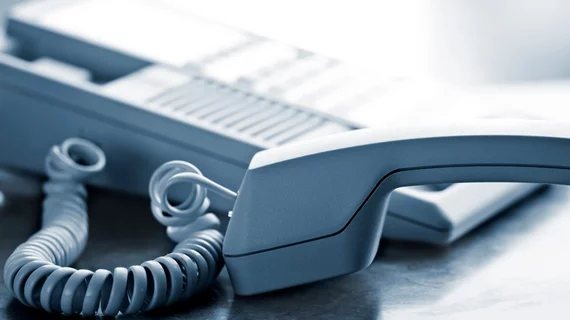In the emergency department, a simple phone call from radiologist to referring physician to convey abnormal test results quickly can prove pivotal to saving a patient’s life. However, if imaging findings are routine, that same phone call may be a waste of time that pulls important resources away from individuals who urgently need them.
That’s one of the key takeaways from a new analysis of radiologist communication in one large ED, published Monday in the Canadian Association of Radiologists Journal. Analyzing all such communication over a one-week period, researchers found that radiologists spent about 10% of their workday communicating results over the phone ahead of delivery of their final report.
And there’s nothing wrong with that. The problem is that emergency imaging physicians spent about an equal amount of time—typically over the phone—discussing negative and positive examinations, noted a team of researchers led by the University of British Columbia, in Vancouver.
“Time spent communicating normal reports to the referring physicians is time that could be spent more valuably discussing cases that are not normal,” wrote Siobhan O' Neill, MD, PhD, with UBC’s Department of Radiology, and colleagues at the University of California Los Angeles. “The practice of routinely calling referring physicians to report negative stat imaging studies may be considered wasteful of both radiologist and referring physician’s time and is likely to have little added value to patients.”
To reach their conclusions, O’Neill and colleagues analyzed all radiologist communication in an academic medical center’s ED over a one-week period. All told, 286 interactions took place over 168 consecutive hours, with about 81% occurring over the phone. Another 17% were in person, while the other 2% was a mix of both. On average, radiologists logged close to 4 minutes on each interaction.
However, clinicians spent nearly equal amounts of time on the phone or in person discussing routine test results (139 interactions or 49%) compared to abnormal findings (147 or 51%). This flies in the face of practice parameters from the Canadian Association of Radiologists, which recommends direct communication with the referring physician ahead of the final report in select circumstances. Those include detection of conditions that carry a risk of death and require immediate attention, or life- or limb-threatening abnormalities that the referring physician did not detect during the initial exam.
In a small number of the 286 interactions, doctors did in fact gather additional information to switch the interpretation from normal to abnormal. But not enough to justify the hundreds of minutes spent on other cases that gathered no benefit from such calls, authors wrote.
For practice leaders, the key takeaway is to consider developing dedicated guidelines on ED interaction that could potentially help streamline workflows, improve patient throughput and reduce diagnostic errors, UCLA and UBC researchers concluded.
“Finding the optimal communication mechanism that satisfies referring physicians and radiologists, allows for secure real-time exchange of information, minimizes potential obstacles, and promotes patient-centered care is no easy task,” O’Neill et al. wrote. “The purpose of this project is in no way to attempt to demonstrate that radiologists are spending too much time communicating with their clinical colleagues in the emergency department. Rather, the data presented herein highlight an inefficient use of communication time.”

